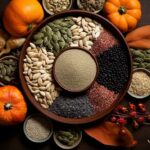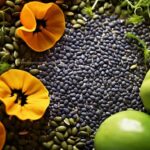Tired of gluten-free bread that doesn’t satisfy? Look no further! Our comprehensive 14-step tutorial on making the perfect gluten-free bread using superfoods has all the information you need.
We’ll show you how to incorporate chia seeds into the recipe for added nutrition and mix in other superfoods for a delicious and healthy loaf. With our tips and tricks, you’ll be able to make bread that rises beautifully and tastes amazing.
Say goodbye to the gluten-free bread woes and hello to culinary success!
Key Takeaways
- Incorporate chia seeds for added nutrition, texture, and flavor enhancement.
- Chia seeds provide benefits such as improved digestion, brain health, and essential vitamins and minerals.
- Chia seeds act as a binding agent, creating a moist and tender bread with a delightful crunch.
- Alternatives to chia seeds include flaxseeds, psyllium husk, hemp seeds, quinoa flakes, and almond flour, which can also enhance the texture and flavor of gluten-free bread.
Preparing the Gluten-Free Bread Dough
To begin preparing the gluten-free bread dough, we’ll start by combining the dry ingredients with the wet ingredients.

One important step in making gluten-free bread is incorporating flax seeds into the dough. Flax seeds are a great source of omega-3 fatty acids and fiber, which can help improve digestion and heart health. They also add a nutty flavor and a pleasant texture to the bread.
In addition to flax seeds, using different flours is essential in gluten-free baking. Popular choices include rice flour, almond flour, and tapioca flour. These flours provide structure and texture to the bread, ensuring that it isn’t too dense or crumbly.
Incorporating Chia Seeds Into the Recipe
Let’s now discuss the benefits of incorporating chia seeds into our gluten-free bread recipe.
Chia seeds are a superfood packed with nutrients such as fiber, omega-3 fatty acids, and antioxidants.
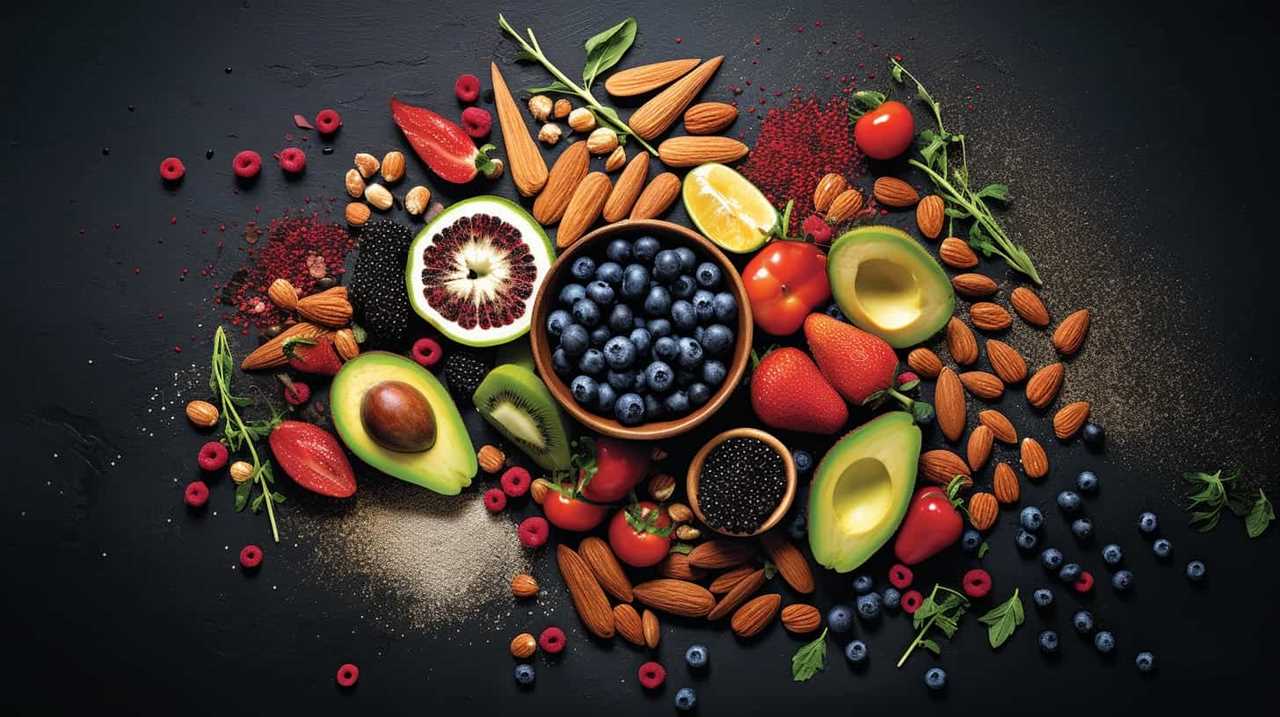
Not only do they enhance the texture and flavor of the bread, but they also provide added nutritional value.
If you’re not a fan of chia seeds or don’t have them on hand, there are alternative ingredients that can be used to achieve similar results.
Benefits of Chia Seeds
We incorporate chia seeds into the recipe by soaking them in water for 10 minutes. This step allows the chia seeds to absorb the liquid and develop a gel-like consistency.
By incorporating chia seeds into your gluten-free bread, you can enjoy numerous benefits. Here are five reasons why chia seeds are a great addition to your baking:

- High in Omega-3 Fatty Acids: Chia seeds are an excellent plant-based source of omega-3 fatty acids, which are essential for brain health and reducing inflammation.
- Rich in Fiber: Chia seeds are packed with dietary fiber, promoting healthy digestion and helping you feel fuller for longer.
- Antioxidant Powerhouse: Chia seeds are loaded with antioxidants, which protect your cells from damage caused by free radicals.
- Boosts Nutrient Content: Adding chia seeds to your bread recipe increases the overall nutritional value by providing essential vitamins and minerals like calcium, magnesium, and iron.
- Enhances Texture: Chia seeds add a delightful crunch and texture to your bread, making it more enjoyable to eat.
Incorporating chia seeds into your gluten-free bread not only enhances its nutritional value but also adds a pleasant texture and taste.
Texture and Flavor Enhancement
By incorporating chia seeds into our gluten-free bread recipe, we can enhance both the texture and flavor of the final product. Chia seeds are packed with nutrients, including fiber, protein, and omega-3 fatty acids, making them an excellent addition to any recipe.
When it comes to texture improvement, chia seeds act as a binding agent, helping to create a moist and tender bread. They also add a subtle crunch, which adds depth to the overall eating experience.
In terms of flavor combinations, chia seeds have a mild, nutty taste that pairs well with a variety of ingredients. Whether you want to add a touch of sweetness with dried fruits or create a savory bread with herbs and spices, chia seeds can complement a wide range of flavors.
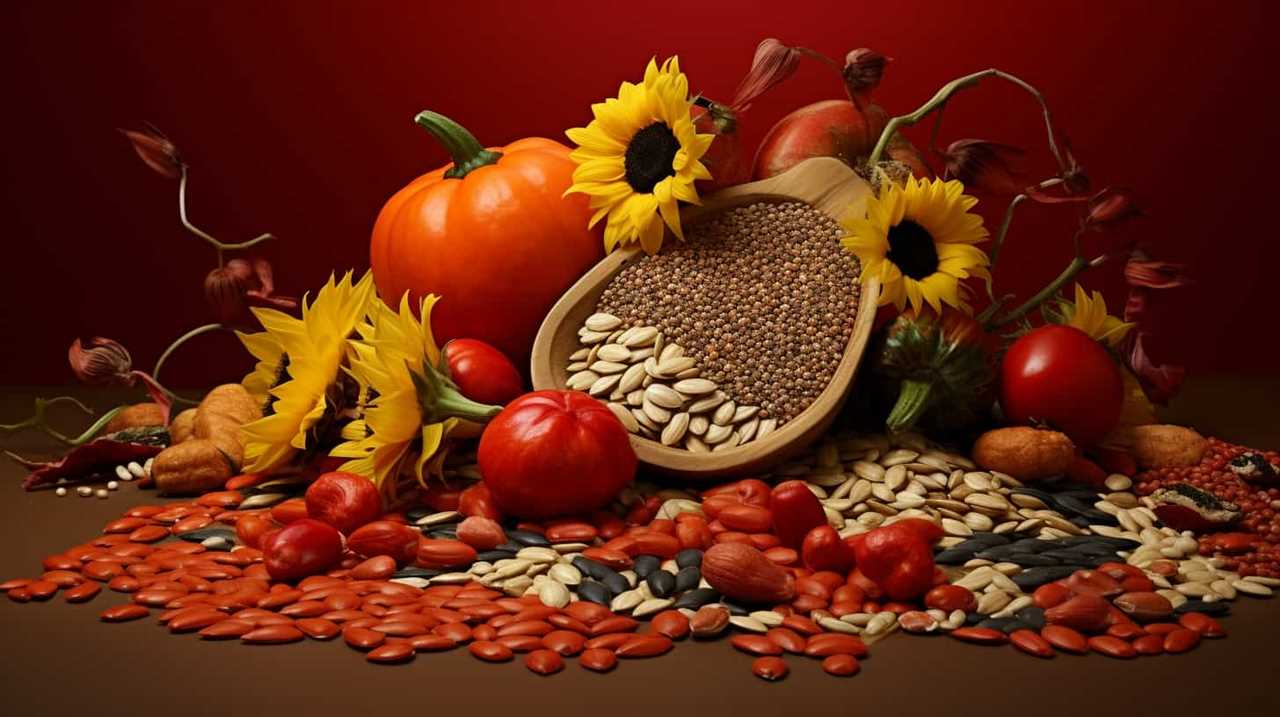
Now, let’s explore some alternatives to chia seeds that can also enhance the texture and flavor of gluten-free bread.
Alternatives to Chia Seeds
To incorporate chia seeds into our gluten-free bread recipe, we can explore alternative ingredients that provide similar texture and flavor enhancements. Chia seeds are known for their ability to add moisture and create a gel-like consistency, which helps bind the ingredients together and improve the overall structure of the bread.
However, if you’re looking for chia seed alternatives or want to incorporate other superfoods into your bread, here are a few options to consider:
- Flaxseeds: Like chia seeds, flaxseeds can form a gel when mixed with liquid, providing moisture and structure to the bread.
- Psyllium husk: This natural fiber is an excellent binding agent and can help improve the texture of gluten-free bread.
- Hemp seeds: These nutrient-dense seeds can add a subtle nutty flavor and provide a boost of protein and healthy fats to your bread.
- Quinoa flakes: Incorporating quinoa flakes into the recipe can add a pleasant crunch and enhance the nutritional profile of your gluten-free bread.
- Almond flour: Made from ground almonds, almond flour can contribute to a moist and tender texture while adding a rich, nutty flavor.
Mixing the Superfoods With the Dough
Let’s mix the superfoods into the dough to create the perfect gluten-free bread.
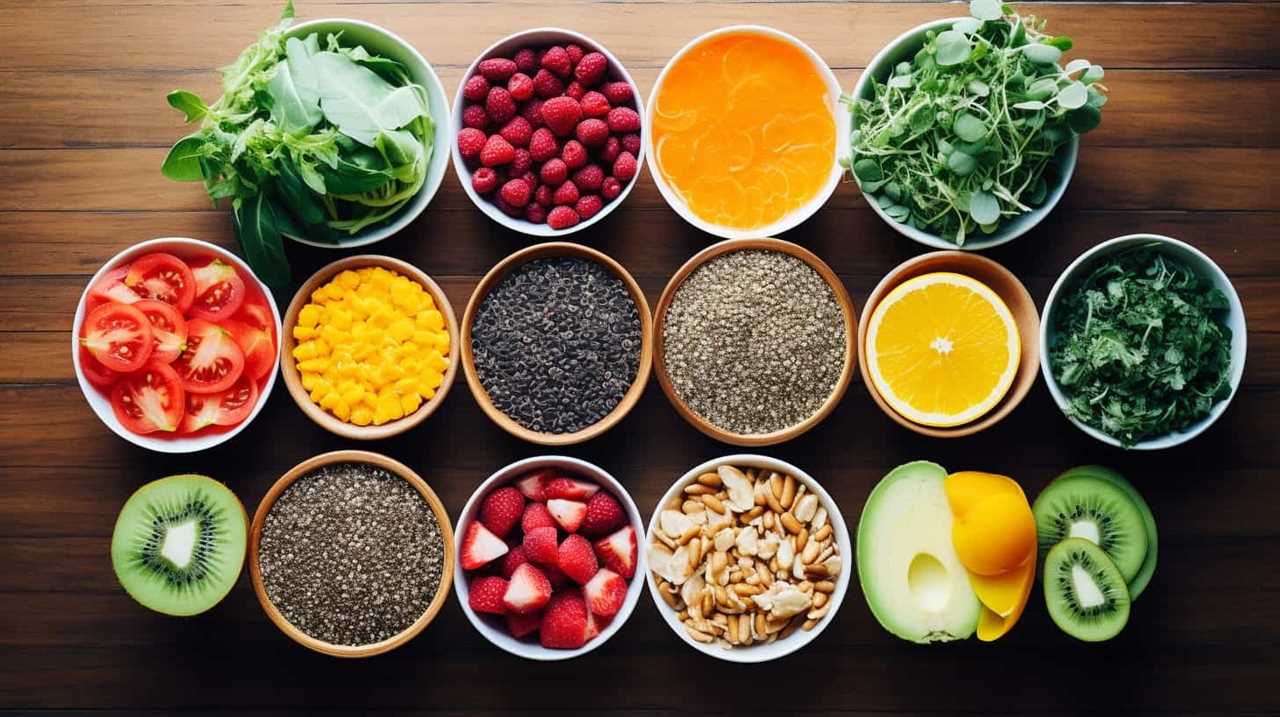
When it comes to mixing techniques, it’s important to ensure that the superfoods are evenly distributed throughout the dough. This can be achieved by first combining the dry ingredients, including the superfoods, in a separate bowl.
Once the dry ingredients are well mixed, they can be added to the wet ingredients in the main mixing bowl. Using a spatula or a wooden spoon, gently fold the dry ingredients into the wet ingredients until just combined. Be careful not to overmix, as this can result in a dense and tough bread.
Mixing the superfoods into the dough not only adds nutritional value but also enhances the flavor and texture of the bread. By incorporating these nutrient-rich ingredients, you’re providing your audience with a delicious and wholesome gluten-free option.
Now, let’s move on to the next step: allowing the dough to rise.
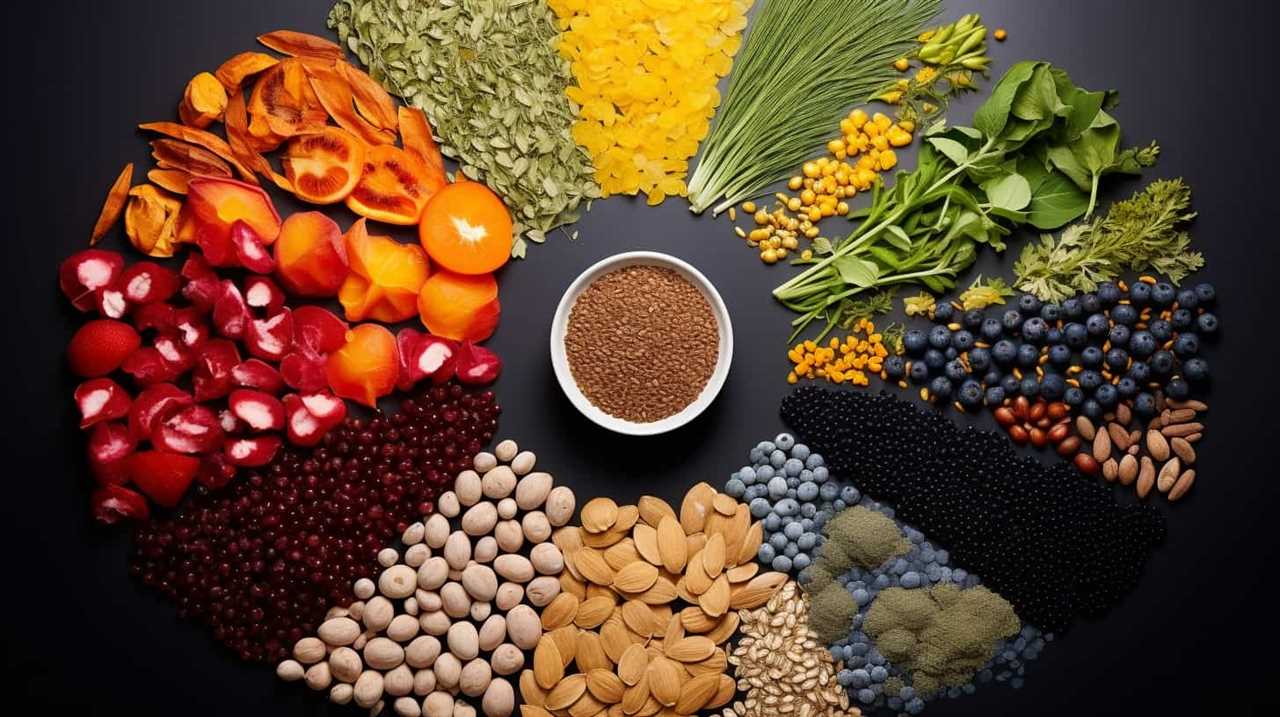
Allowing the Dough to Rise
When it comes to allowing the dough to rise, there are several important points to consider.
First, the optimal rising time can vary depending on the recipe and ingredients used. It’s important to follow the recipe instructions closely to ensure the dough has enough time to rise properly.
Additionally, the temperature at which the dough is allowed to rise can also impact the final result. Keeping the dough in a warm, draft-free area will help promote a better rise.
Lastly, there are techniques that can be employed to improve the rise of gluten-free bread, such as using a pre-ferment or incorporating ingredients like xanthan gum or psyllium husk powder.

Optimal Rising Time
We recommend allowing the dough to rise for the optimal amount of time to achieve perfect gluten-free bread with superfoods. The rising process is crucial as it allows the dough to develop its structure, resulting in a light and airy texture. Here are some techniques for better rise:
- Use warm water: The temperature of the water affects yeast activity. Warm water (around 110°F) helps activate the yeast and encourages a faster rise.
- Give it time: Gluten-free bread dough typically requires a longer rising time compared to regular bread dough. Be patient and allow the dough to rise until it has doubled in size.
- Create a warm environment: Place the dough in a warm spot, like near a preheating oven or on top of a warm stove, to provide an ideal temperature for yeast activity.
- Cover it properly: Cover the dough with a damp cloth or plastic wrap to retain moisture, which helps prevent the surface from drying out and inhibiting the rise.
- Avoid disturbing the dough: Once the dough has been shaped, handle it gently to avoid deflating it and disrupting the rising process.
Temperature for Rising
To achieve optimal rising for gluten-free bread dough, we need to consider the temperature at which it’s allowed to rise. The temperature plays a crucial role in determining the final texture and flavor of the bread.
Generally, gluten-free bread requires a warmer environment for rising compared to regular bread. A temperature range of 80-90°F (27-32°C) is ideal for gluten-free bread dough to rise properly. This temperature range allows the yeast to ferment and produce carbon dioxide, which creates the air pockets that give bread its light and airy texture.
There are a few techniques you can use to ensure a better rise in your gluten-free bread. Firstly, you can preheat your oven to a low temperature (around 200°F or 95°C), then turn it off and place your covered dough inside. The residual heat will create a warm and controlled environment for the dough to rise.
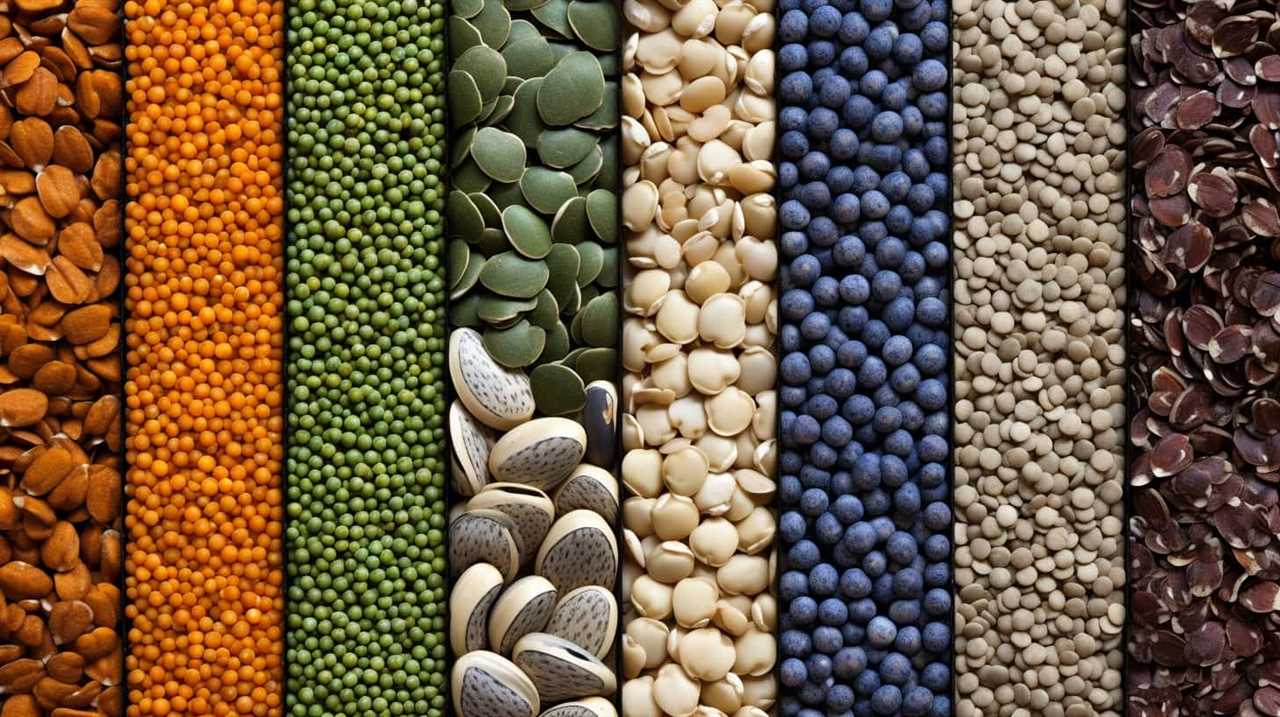
Another technique is to use a proofing box or a warm spot in your kitchen, such as near a heating vent, to provide consistent warmth for the dough to rise.
Techniques for Better Rise
One effective technique for achieving a better rise in gluten-free bread dough is by ensuring a warm and controlled environment for fermentation. Here are some techniques that can help improve the texture and rise of gluten-free bread:
- Preheating the oven to a low temperature and then turning it off before placing the dough inside, creating a warm environment.
- Using a proofing box or a warm towel to cover the dough during the rising process.
- Adding a bit of honey or sugar to the dough to provide food for the yeast and enhance fermentation.
- Activating the yeast separately by dissolving it in warm water with a pinch of sugar before adding it to the dough.
- Incorporating a gluten-free bread improver or dough enhancer to help strengthen the structure of the dough and promote a better rise.
By utilizing these yeast activation techniques and providing the ideal conditions for fermentation, you can enhance the rise of your gluten-free bread dough and achieve a light and fluffy texture.
Now, let’s move on to the next step of shaping the gluten-free bread loaf.

Shaping the Gluten-Free Bread Loaf
First, preheat the oven to 350 degrees Fahrenheit.
Shaping the gluten-free bread loaf is an important step in achieving a professional-looking and well-textured loaf. There are several shaping techniques that can be used for gluten-free bread recipes.
One popular method is the ‘roll and tuck’ technique, where you gently roll the dough into a log shape and then tuck the ends underneath to create a smooth surface.
Another technique is the ’round and smooth’ method, where you shape the dough into a round ball and smooth out any creases or folds.

Whichever shaping technique you choose, it’s important to handle the dough gently to avoid deflating it. Once the loaf is shaped, transfer it to a greased or lined baking pan and let it rise for the specified time before baking.
Adding a Superfood Topping
After shaping the gluten-free bread loaf, we can enhance its nutritional value by adding a superfood topping. Superfoods are nutrient-dense ingredients that provide numerous health benefits. Here are five delicious and nutritious superfood toppings you can try on your gluten-free bread:
- Avocado slices and chia seeds: Avocados are packed with heart-healthy fats while chia seeds are rich in fiber and omega-3 fatty acids.
- Hummus and roasted vegetables: Hummus adds creaminess and protein, while roasted vegetables provide vitamins and minerals.
- Almond butter and sliced berries: Almond butter is a great source of healthy fats, and berries are loaded with antioxidants and vitamins.
- Greek yogurt and honey: Greek yogurt offers protein and probiotics, and honey adds natural sweetness and antioxidants.
- Smashed chickpea and herb spread: Chickpeas are high in protein and fiber, and the herbs add a burst of flavor.
By adding these superfood toppings, you not only increase the nutritional value of your gluten-free bread but also enjoy a variety of flavors and textures.
Now let’s move on to the next step: baking the gluten-free bread to perfection.

Baking the Gluten-Free Bread to Perfection
To bake the gluten-free bread to perfection, we need to carefully monitor the temperature and baking time. When incorporating alternative grains into the recipe, it’s crucial to understand that they’ve different baking requirements than traditional wheat flour.
Gluten-free bread tends to be more delicate and can easily become dry or crumbly if overbaked. To avoid this, it’s important to follow the recipe instructions precisely and make adjustments based on your oven’s characteristics.
One tip for achieving a crispy crust is to preheat the oven at a higher temperature, around 425°F (220°C), and then reduce it to the recommended temperature once you put the bread in. This initial burst of heat helps to create a beautiful golden crust. Additionally, using a baking stone or a pizza stone can help achieve a crispy bottom crust.
Remember to always keep an eye on the bread while it bakes, as baking times may vary depending on the recipe and oven.
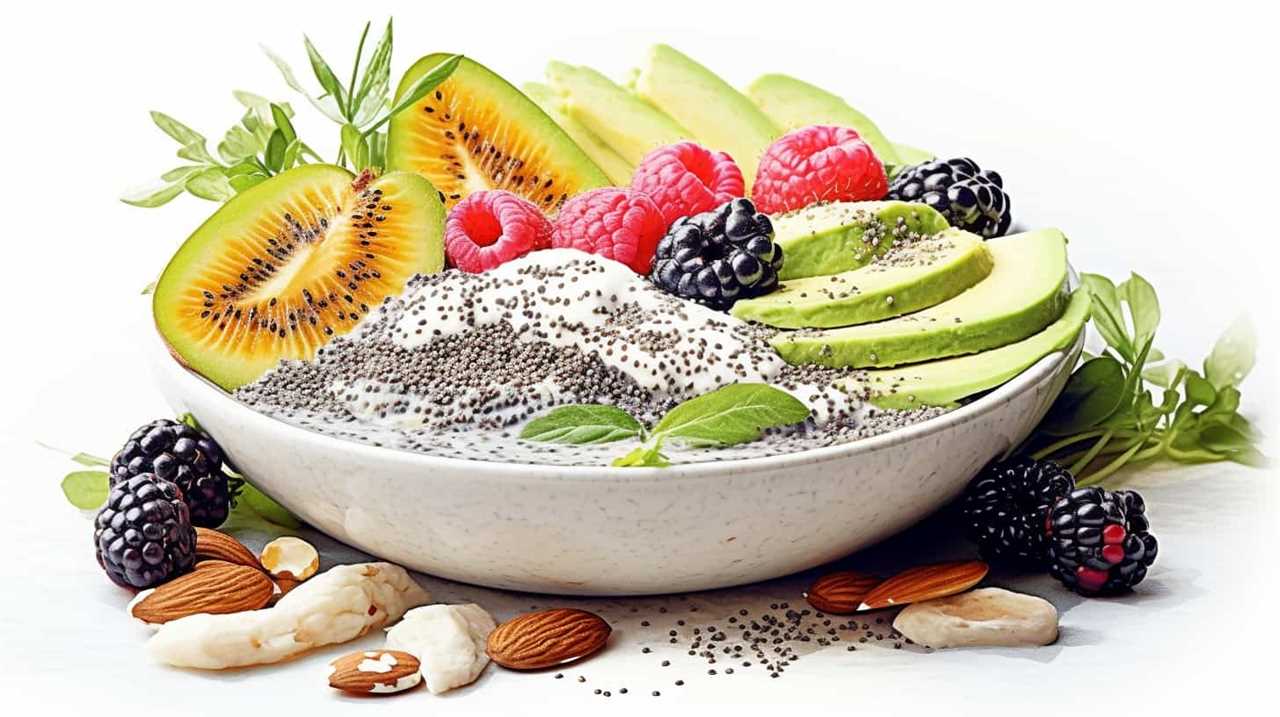
With these tips, you can bake gluten-free bread to perfection every time.
Checking the Bread for Doneness
When it comes to checking the bread for doneness, there are a few key points to keep in mind.
Firstly, testing the bread’s doneness can be done through visual cues such as the color of the crust and the texture of the bread.
Additionally, using a temperature check with a food thermometer can provide a more accurate indication of the bread’s internal temperature and whether it’s fully cooked.
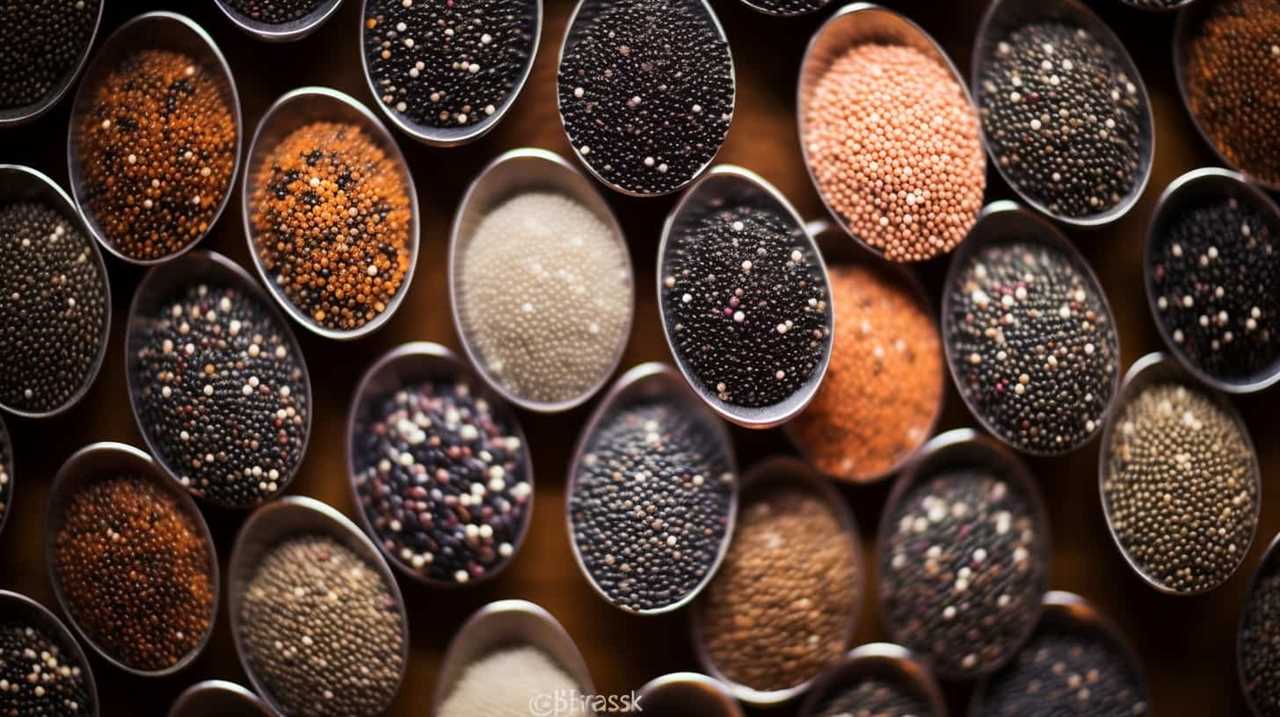
Testing Bread Doneness
We always check the bread for doneness by inserting a toothpick into the center and ensuring it comes out clean. This simple technique ensures that the bread is fully cooked and ready to be enjoyed.
Here are some tips for testing bread doneness and achieving a crispy crust:
- Tap the bottom: Gently tap the bottom of the loaf to check for a hollow sound. This indicates that the bread is fully cooked.
- Check the color: A golden brown crust is a good indicator of a well-baked loaf.
- Use a thermometer: For precision, use a kitchen thermometer to check the internal temperature. Gluten-free bread should reach a temperature of 200°F (93°C).
- Check the texture: The bread should have a springy texture when gently pressed with your finger.
- Allow it to cool: Let the bread cool completely before slicing to allow the crust to become crispier.
Visual Cues for Doneness
Continuing from our previous discussion on testing bread doneness, let’s now explore the visual cues that can help us determine if the bread is fully cooked and ready to be enjoyed. Checking bread doneness is an important step in troubleshooting bread issues and ensuring that your gluten-free bread turns out perfectly every time. By relying on visual cues, we can avoid common pitfalls such as underbaking or overbaking. Here are some key visual cues to look out for:
| Visual Cue | Description |
|---|---|
| Golden Brown Crust | A well-baked bread will have a golden brown crust. |
| Crisp Exterior | Tap the bread’s bottom, and it should sound hollow. |
| Even Coloring | The bread should have an even color throughout. |
| Shrinkage | The bread should shrink slightly away from the sides. |
Temperature Check for Doneness
To determine if the bread is fully cooked, we can use a temperature check as the next step in ensuring the perfect gluten-free bread. This testing technique is reliable and helps us achieve a perfect crust.
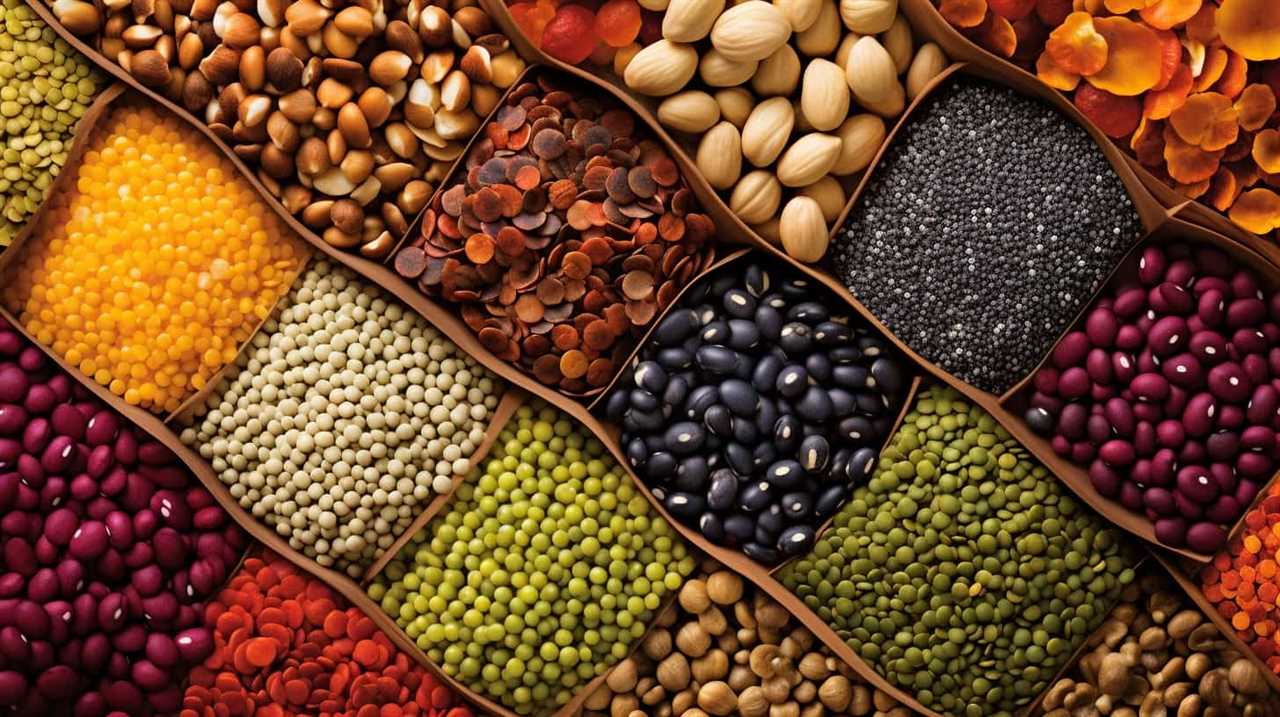
Here are five steps to perform a temperature check for doneness:
- Insert a food thermometer into the center of the bread loaf.
- Ensure that the thermometer isn’t touching the pan or any air pockets.
- Wait for the temperature reading to stabilize.
- For gluten-free bread, the internal temperature should reach around 200°F (93°C).
- If the bread hasn’t reached the desired temperature, continue baking and recheck at regular intervals.
Letting the Bread Cool
Once the gluten-free bread has finished baking, it is important to allow it to cool completely before slicing and serving. Giving the bread enough time to cool is crucial for achieving the best texture and flavor. During the cooling process, the starches in the bread continue to set, resulting in a more stable crumb and improved sliceability. Additionally, allowing the bread to cool helps it retain moisture, preventing it from becoming dry and crumbly.
To give you a better understanding of the optimal cooling time for gluten-free bread, here is a table outlining the recommended cooling times for different bread types:
| Bread Type | Optimal Cooling Time |
|---|---|
| Loaf bread | 1-2 hours |
| Rolls | 30 minutes |
| Baguettes | 1 hour |
| Flatbread | 15-20 minutes |
| Buns | 30 minutes |
Slicing the Gluten-Free Bread
After allowing the gluten-free bread to cool completely, we can now proceed to slice it for serving. Slicing gluten-free bread requires a gentle touch to ensure it doesn’t crumble or fall apart. Here are some slicing techniques to help you achieve perfect slices:
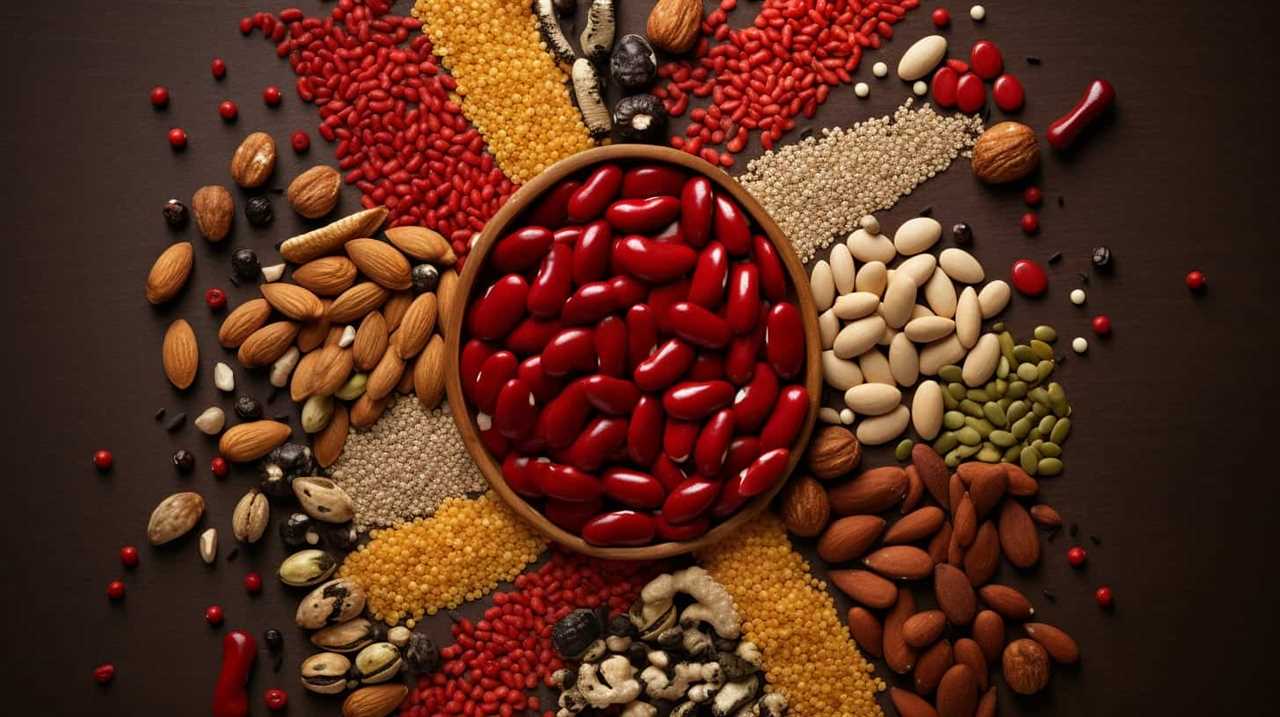
- Use a sharp serrated knife: A sharp knife will make clean cuts without squishing the bread.
- Slice with a sawing motion: Apply gentle pressure while sawing back and forth to avoid compressing the bread.
- Freeze the bread slightly: If the bread is too soft, pop it in the freezer for a few minutes to firm it up before slicing.
- Use a bread slicer guide: This tool helps maintain even slices and prevents the knife from slipping.
- Store sliced bread properly: Keep the slices in an airtight container or bag to prevent them from drying out.
Storing the Bread for Future Use
When it comes to storing gluten-free bread for future use, it’s important to follow the best storage methods to maintain its freshness and quality.
One key consideration is avoiding mold and staleness, which can be prevented by storing the bread in a cool, dry place or using airtight containers.
Additionally, freezing the bread can extend its shelf-life even further, allowing you to enjoy it over a longer period of time.
Best Storage Methods
To store our gluten-free bread for future use, we recommend using airtight containers. Proper storage is crucial in maintaining the freshness and quality of your bread.

Here are some best storage methods to ensure your gluten-free bread stays delicious and free from staleness:
- Store the bread at room temperature: The best temperature for storing gluten-free bread is around 70°F (21°C).
- Keep the bread away from direct sunlight: Sunlight can accelerate the staling process and affect the taste and texture of the bread.
- Slice the bread before storing: Slicing the bread allows for easier access and prevents unnecessary handling that can lead to moisture loss.
- Wrap the bread in plastic wrap or aluminum foil: This helps to maintain moisture and prevent the bread from drying out.
- Freeze the bread for long-term storage: If you don’t plan on consuming the bread within a few days, freezing it can help preserve its freshness for several weeks.
By following these storage methods, you can prevent staleness and enjoy your gluten-free bread for an extended period of time.
Now, let’s move on to the next section, where we’ll discuss how to avoid mold and further prevent staleness.
Avoiding Mold and Staleness
Let’s talk about how we can prevent mold and staleness when storing our gluten-free bread for future use. One of the key factors in preventing bread dryness and staleness is proper storage. Here are some tips to ensure your gluten-free bread stays fresh:
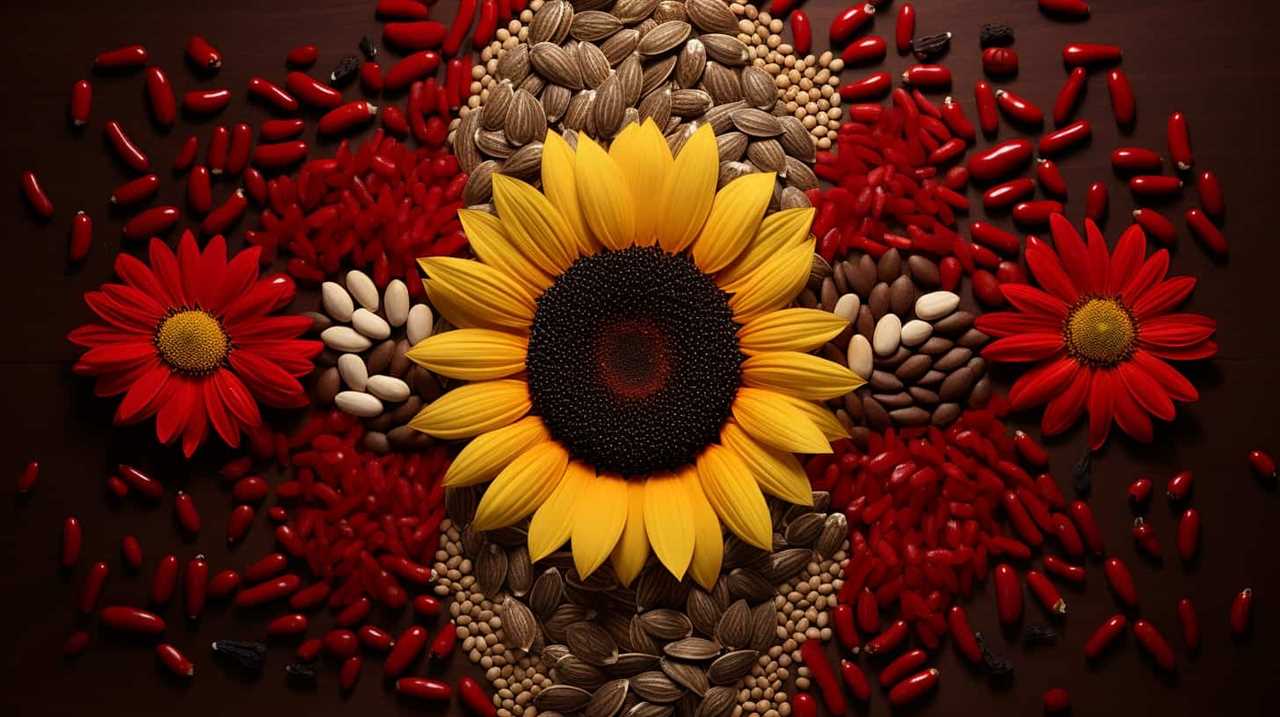
- Keep it sealed: Store your bread in an airtight container or resealable bag to prevent moisture from getting in.
- Avoid the fridge: Contrary to popular belief, refrigerating gluten-free bread can actually accelerate the staling process. Instead, store it at room temperature.
- Freeze for longevity: If you don’t plan on consuming the bread within a few days, freezing is a great option. Wrap the bread tightly in plastic wrap or aluminum foil, then place it inside a freezer bag to prevent freezer burn.
Freezing for Longer Shelf-Life
To extend the shelf-life of gluten-free bread for future use, we freeze it in airtight packaging. Freezing bread can help maintain its freshness and prevent it from going stale.
Here are some freezing techniques to ensure your gluten-free bread stays delicious:
- Wrap the bread tightly in plastic wrap or place it in a freezer-safe bag to prevent moisture loss and freezer burn.
- Slice the bread before freezing to make it easier to thaw and use.
- Place the wrapped bread in a freezer-safe container or zip-top bag to provide an extra layer of protection.
- Label the packaging with the date of freezing to keep track of its freshness.
- When thawing, remove the bread from the freezer and let it come to room temperature slowly to prevent condensation and maintain its texture.
Serving Suggestions for the Gluten-Free Bread
We often enjoy serving our gluten-free bread with a variety of delicious and healthy accompaniments. Here are some creative toppings and ideas for serving gluten-free bread that will elevate your dining experience.
| Topping Ideas | Description | Pairing Suggestions |
|---|---|---|
| Avocado and Tomato | Creamy avocado slices with juicy tomatoes | Fresh basil leaves |
| Hummus and Roasted Veggies | Creamy hummus with roasted vegetables | Baby spinach leaves |
| Smoked Salmon and Cream Cheese | Smoky salmon with creamy cheese spread | Fresh dill and lemon zest |
| Almond Butter and Banana Slices | Nutty almond butter with sweet banana | Chia seeds and honey drizzle |
These combinations provide a balance of flavors and textures that complement the gluten-free bread. Whether you prefer savory or sweet, there’s a topping idea for everyone. Get creative and experiment with different combinations to find your favorite. These suggestions not only add a burst of flavor but also provide additional nutrients, making your gluten-free bread even more satisfying.
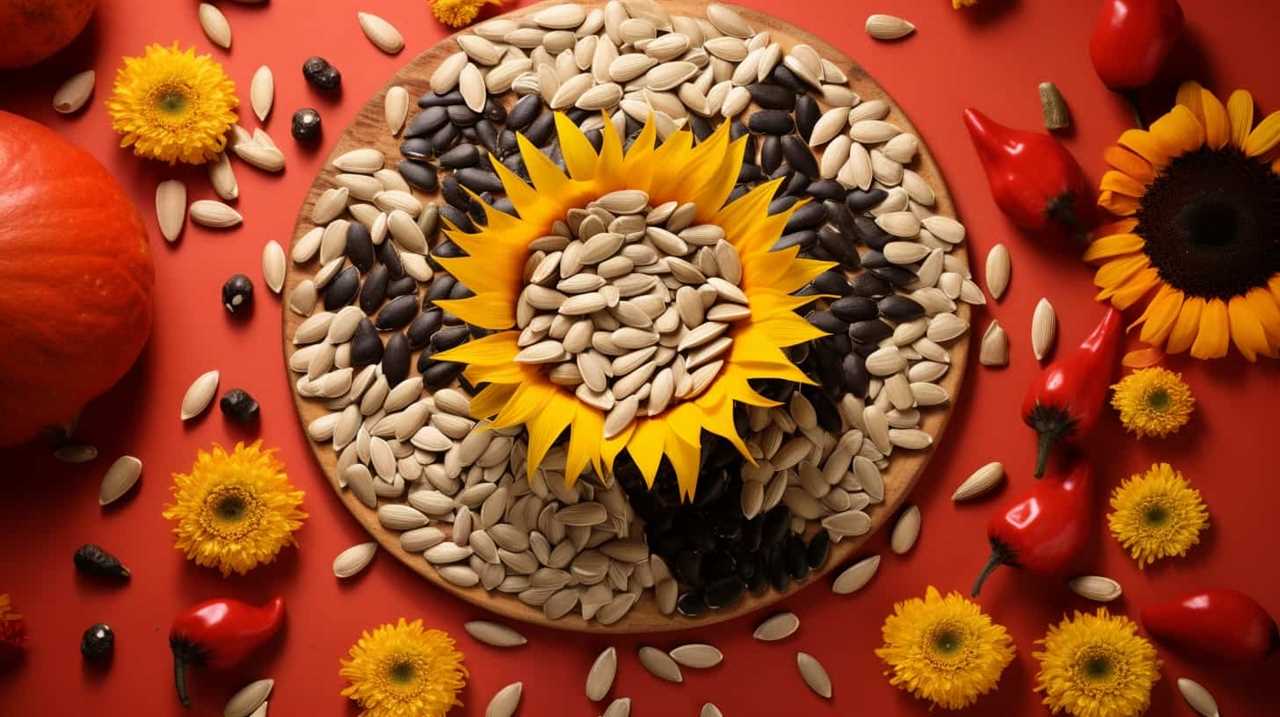
Nutritional Benefits of Chia Seeds in the Bread
Chia seeds offer numerous nutritional benefits when incorporated into gluten-free bread. These tiny seeds are packed with essential nutrients that can enhance the nutritional profile of your bread. Here are five reasons why you should consider incorporating chia seeds into your baking:
- High in fiber: Chia seeds are an excellent source of dietary fiber, which can aid digestion and promote a feeling of fullness.
- Omega-3 fatty acids: Chia seeds are one of the richest plant-based sources of omega-3 fatty acids, which are beneficial for heart health and inflammation reduction.
- Protein powerhouse: Chia seeds are a great plant-based protein option, providing all essential amino acids that our bodies need.
- Antioxidant-rich: Chia seeds are loaded with antioxidants, which can help protect our cells from damage caused by free radicals.
- Gluten-free alternative: Chia seeds can be used as a binding agent in gluten-free baking, providing structure and texture to your bread without the need for gluten.
Incorporating chia seeds into your baking not only adds nutritional value but also enhances the taste and texture of your gluten-free bread. Try out some chia seed recipes and experience the benefits for yourself!
Troubleshooting Common Gluten-Free Bread Issues
When troubleshooting common issues with gluten-free bread, it’s important to start by examining the recipe and ingredients used.
One common problem is achieving the right bread texture. Gluten-free bread can sometimes turn out dense and heavy instead of light and fluffy. This can be due to using too much gluten-free flour or not enough liquid in the recipe. Adjusting the ratios can help improve the texture.

Another issue is achieving a golden crust. Gluten-free bread tends to have a paler crust compared to traditional bread. To achieve a golden crust, try brushing the bread with an egg wash or a mixture of oil and water before baking. This will give it a nice color and crispness.
Frequently Asked Questions
Can I Use a Bread Machine to Make Gluten-Free Bread With Superfoods?
Yes, you can use a bread machine to make gluten-free bread with superfoods. However, if you’re looking for alternatives, there are manual methods that can be just as effective. Incorporating the best superfoods for gluten-free bread can enhance its nutritional value.
Can I Substitute Chia Seeds With Other Superfoods in the Bread Recipe?
Yes, you can substitute chia seeds with other superfoods in the gluten-free bread recipe. By using different superfoods, you can enjoy a variety of benefits such as increased nutritional value and unique flavors in your bread.
How Long Should I Let the Dough Rise Before Shaping It Into a Loaf?
We should let the gluten-free bread dough rise for around 1-2 hours before shaping it into a loaf. The rising time plays a crucial role in developing the texture of the bread, ensuring it is light and airy.
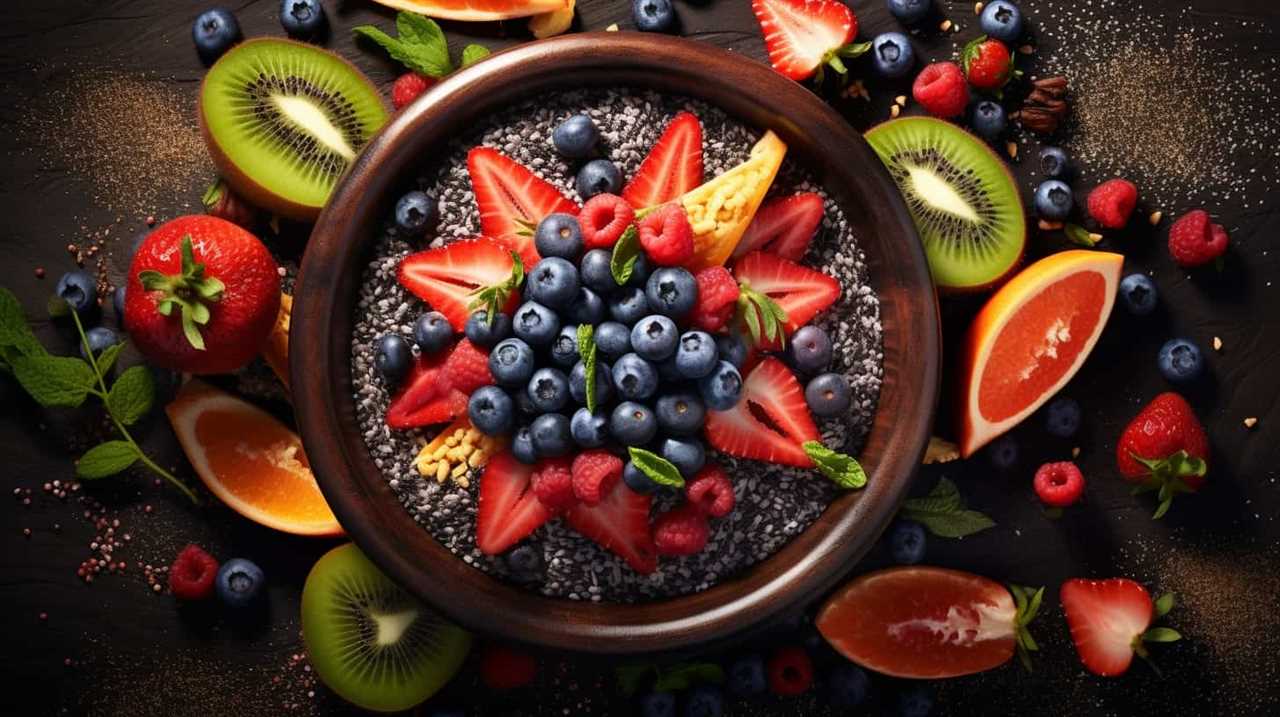
How Do I Know When the Bread Is Fully Baked and Ready to Be Taken Out of the Oven?
To know if our bread is ready, we look for the signs of a perfectly baked loaf. We check for a golden crust, a hollow sound when tapped, and an internal temperature of 190-200°F.
Can I Freeze the Gluten-Free Bread for Later Use?
Yes, you can freeze gluten-free bread for later use. Freezing bread is a great way to extend its shelf life. Make sure to wrap it tightly in plastic wrap or a freezer bag to prevent freezer burn.
Conclusion
In conclusion, by following these 14 steps, you can create the perfect gluten-free bread infused with superfoods like chia seeds. Not only does this bread provide a delicious alternative for those with gluten sensitivities, but it also offers numerous nutritional benefits.
Did you know that chia seeds are packed with omega-3 fatty acids and fiber? Incorporating them into your bread can enhance its healthfulness.
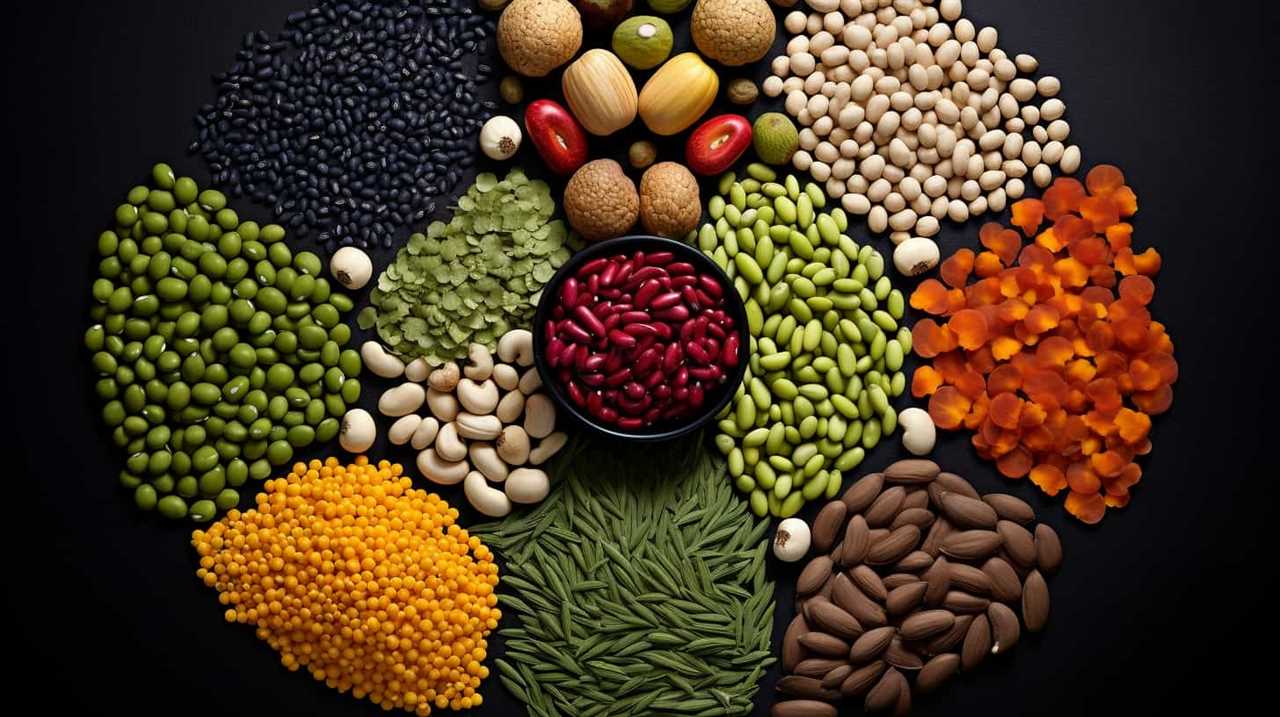
So why not give it a try and enjoy this nutritious and flavorful gluten-free bread?


